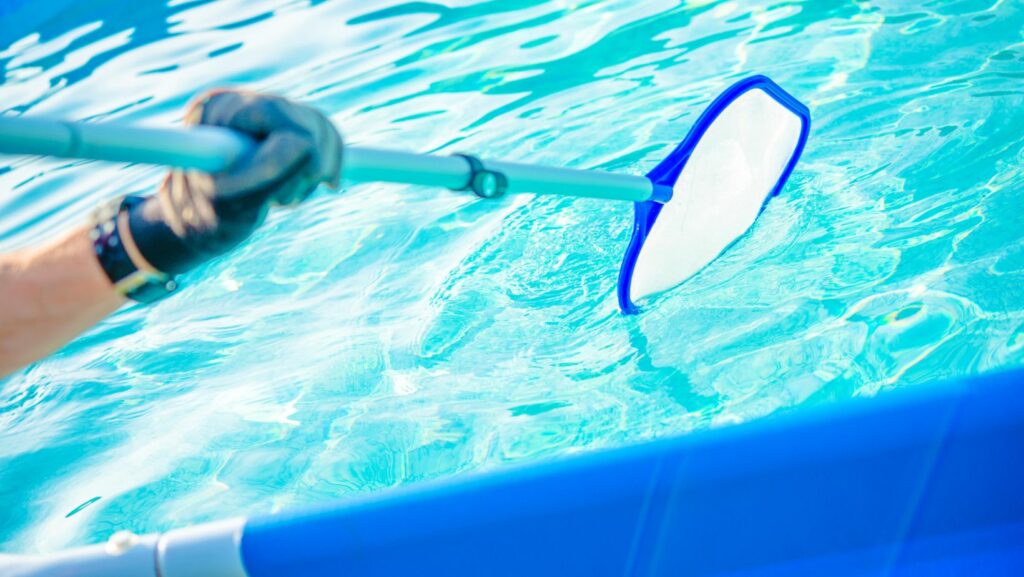Are you tired of dealing with a dirty pool but don’t have access to a pump? Don’t worry, because I’ve got you covered! In this article, I’ll share some beginner-friendly tips on how to vacuum your pool without a pump. Whether you’re facing a temporary pump malfunction or simply prefer the manual approach, these techniques will help you keep your pool clean and sparkling.
First things first, let’s talk about the equipment you’ll need. To manually vacuum your pool, gather a telescopic pole, a vacuum head attachment, and a long hose. These tools will allow you to effectively remove debris from the bottom of your pool. Additionally, make sure your pool is equipped with skimmer baskets and backwash valves as they play an important role in the cleaning process.
Table of Contents
ToggleHow to Vacuum a Pool Without a Pump
Before you begin the process of manually cleaning your pool, it’s important to properly prepare it. This will help ensure that you can effectively remove debris and maintain a clean swimming environment. Here are a few steps to follow:
- Remove large debris: Start by using a pool net or skimmer to remove any leaves, branches, or other visible debris from the surface of the water. This will prevent them from clogging up your cleaning equipment later on.
- Brush the walls and floor: Next, grab a pool brush and thoroughly scrub the walls and floor of your pool. This will help loosen any algae or dirt buildup, making it easier to vacuum later on. Pay extra attention to corners, steps, and other hard-to-reach areas.
- Check and clean the filter: It’s essential to have a clean and functioning filter before proceeding with manual cleaning. Take time to inspect your filter system and clean or replace any dirty filters as needed.
- Lower the water level if necessary: Depending on how much dirt has accumulated in your pool, you may need to lower the water level slightly before vacuuming. Use caution when doing this; don’t drain too much water as it could damage your pool.
- Prepare your manual vacuum equipment: If you don’t have a pump-driven vacuum system, you’ll need a manual vacuum setup consisting of a telescopic pole, vacuum head attachment, hose pipes, and skimmer basket adapter (if required). Assemble these components according to the manufacturer’s instructions.
- Prime the hose: To ensure optimal suction during manual cleaning, it’s important to prime your hose by filling it with water before connecting it to the skimmer inlet or dedicated vacuum port.
- Connect everything securely: Attach one end of the hose pipe to the vacuum head attachment and secure it tightly using clamps if necessary. Connect the other end to the skimmer inlet or dedicated vacuum port, making sure it’s snugly fitted.

Gathering the Necessary Equipment
When it comes to manually vacuuming your pool, having the right equipment is crucial. Here are some essential items you’ll need to gather before getting started:
- Telescopic Pole: A telescopic pole allows you to reach every corner of your pool easily. Look for one that extends to at least 12 feet.
- Pool Vacuum Head: This is the attachment that connects to the telescopic pole and actually does the cleaning. Make sure it’s compatible with your pool’s surface (concrete, vinyl, or fiberglass).
- Hose: You’ll need a long hose to connect between the vacuum head and your pool’s skimmer inlet or dedicated suction port.
- Vacuum Hose Adapter: If your vacuum head doesn’t fit directly into the skimmer or suction port, you may need an adapter for a secure connection.
- Leaf Skimmer: Before vacuuming, use a leaf skimmer net to remove any large debris floating on the water’s surface.
- Chemical Test Kit: It’s important to regularly test and maintain proper chemical levels in your pool. A reliable test kit will help you monitor chlorine, pH, alkalinity, and other important parameters.
- Pool Brush: For better cleaning results, consider using a pool brush to scrub off any stubborn dirt or algae buildup on walls and steps.
- Safety Goggles and Gloves: Protect yourself while handling chemicals or reaching into potentially dirty areas by wearing safety goggles and gloves.

